

Manufacturer: Manufacture d'armes de Saint-Étienne

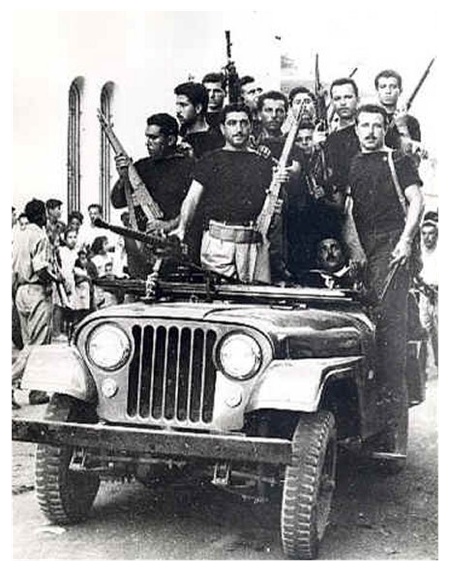
The 300,000 MAS series rifles represent the high point of French rifle design, created based on forty-years of rifle design experience to carry out a tactical doctrine honed in two major wars and dozens of colonial conflicts. The design was first finalized in 1939 and would serve as the main French battle rifle from 1960 to 1980. During that time it became one of the most reliable standard weapons of the major powers, although like many French rifles it would soldier on in obscurity, earning a poor reputation more from its association with the French army than from any quality issues.
After the Great War the French army planned a massive rearmament that included retirement of the innovative but obsolete 8x50mmR Lebel cartridge. Before the war the rimless 7x59mm Meunier round was on its way for adoption, but a combination of logistics concerns and faulty tactical thinking lead to it being used only in small numbers. In 1924 the French adopted a 7.5mm cartridge, the Mle 1924 7.5x58mm, based closely on the 6.5x55mm Mauser and other rimless rounds in use by the major powers. The round was, in fact, so close to the cartridge size of the 8x57mm Mauser cartridge that this round could chamber and fire in 7.5mm weapons. After numerous burst barrels the French redesigned the their cartridge into the 7.5x54mm, adopted in 1929.
With a modern, powerful centerfire cartridge adopted, French armories started to collect the results of nearly forty years of weapon design tests into a new series of internal and external competitions. These competitions, starting with the Concours of 1931, were held with the goal not of selecting a single new weapon, but of selecting the best parts of a wide range of designs to create a new hybrid design. The design process was part of a wider plan to create a two weapon system - a repeating (bolt action) rifle for second line use, and a semi-automatic rifle for front-line use.

The final design that was adopted used a a gas impingement system that tapped a small amount of the gas generated by the exploding powder near the muzzle of the barrel and feeds it back to the bolt face. There it pushes against the two piece bolt, forcing it back so that it drops out of battery. 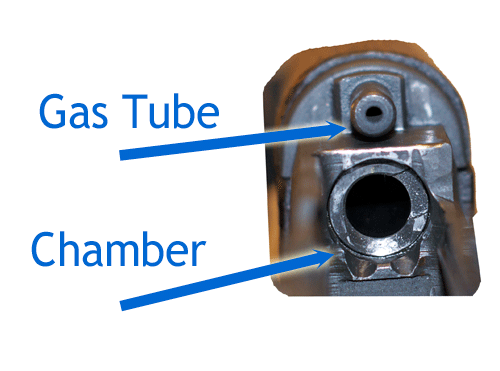 It then presses against the mainspring, allowing it to extract the old round and eject it, then strip a new round from the magazine and chamber it.
It then presses against the mainspring, allowing it to extract the old round and eject it, then strip a new round from the magazine and chamber it.
In 1936 the repeating (bolt action) rifle for second-line troops went into serial production giving Manufacture d'armes de St. Etienne (MAS) time to complete the planned semi-automatic component of the French rearmament. In 1938 MAS finished the prototype of the new rifle, designated the Fusil Semi-Automatique (FSE) MAS Mle 1938 (not to be confused with the submachine gun of the same name), which was modified in 1939 with plans for serial production by 1940. At the time the MAS Mle 1936 rifle was being produced at around 5,000 units per month. The MAS plant established plans to split that production capacity with the new Fusil MAS Mle 1940 with a goal of adding 1,000 autoloaders per month, this quantity reducing number of bolt actions being produced by this much.
During the run up to the production of the Mle 1940 tests of various configurations of the weapon were made, in particular looking at telescopic sight mounting and use of removable magazines. 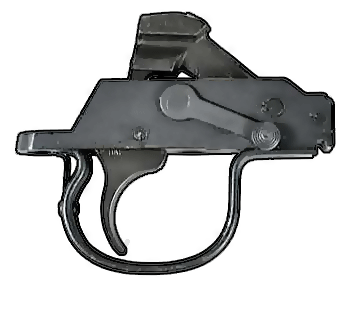 Infantry commanders were interested in having a weapon that could both be loaded with single shots and stripper clips, but also had removable a magazine. Armory engineers tested a ten, twenty, and twenty-five round removable magazine. The larger magazines were not favored by infantry because of their bulk, but the ten-round magazines were considered a good compromise except for the tendency of the magazine to drop from the magazine well during mishandling. Plans exsisted to adopt the magazine version of the Mle 1940, but were put on hold because of expense.
Infantry commanders were interested in having a weapon that could both be loaded with single shots and stripper clips, but also had removable a magazine. Armory engineers tested a ten, twenty, and twenty-five round removable magazine. The larger magazines were not favored by infantry because of their bulk, but the ten-round magazines were considered a good compromise except for the tendency of the magazine to drop from the magazine well during mishandling. Plans exsisted to adopt the magazine version of the Mle 1940, but were put on hold because of expense.
The Mle 1940 was unique for French weapons in that it was equipped with a manual safety. Previous French rifles did not use any form of safety as a matter of policy. According to French doctrine, soldiers were not suppose to carry their weapons with a loaded chamber. Instead they would close the bolt of their weapon on an empty chamber with a loaded magazine. This doctrine was based on two facts: that soldiers using weapons with safeties tended to depend on them rather than good training, causing injuries when the safety failed or when it was not deployed, and that early rifle safeties tended to fail when the weapon was in poor repair. French weapons also had (at that time) the advantage of being all hammerless designs. Hammer-fired and open-bolt weapons could, if dropped with a loaded chamber, go off. The MAS Mle 40 could not re-cock a hammerless striker like used on the MAS 1936 (the rotary action reduces reliability in autoloaders and requires considerably more gas power to actuate) so it used a traditional hammer.

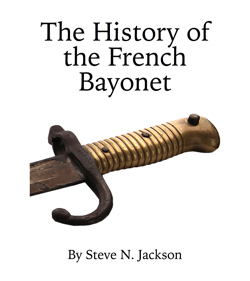 The FSE MAS Mle 1940 was only produced in very small numbers before the war overtook production, none of which reached the troops. Instead in the twilight world of the fall of France and the formation of the Vichy government the newly made weapons and a huge stock of prototypes was simply locked away. The German authorities took the chance to look through the entire armory including examining MAS semi-automatic prototypes, but the Wehrmacht was not yet convinced of the need for an autoloading rifle design and did not attempt to put the French weapon into service. Despite tooling to start production of thousands of rifles a month, the MAS armory was idled by German authorities except for the slow production of MAS Mle1936 rifles (called the GEW 242(f) by the Germans) for local defense.
The FSE MAS Mle 1940 was only produced in very small numbers before the war overtook production, none of which reached the troops. Instead in the twilight world of the fall of France and the formation of the Vichy government the newly made weapons and a huge stock of prototypes was simply locked away. The German authorities took the chance to look through the entire armory including examining MAS semi-automatic prototypes, but the Wehrmacht was not yet convinced of the need for an autoloading rifle design and did not attempt to put the French weapon into service. Despite tooling to start production of thousands of rifles a month, the MAS armory was idled by German authorities except for the slow production of MAS Mle1936 rifles (called the GEW 242(f) by the Germans) for local defense.
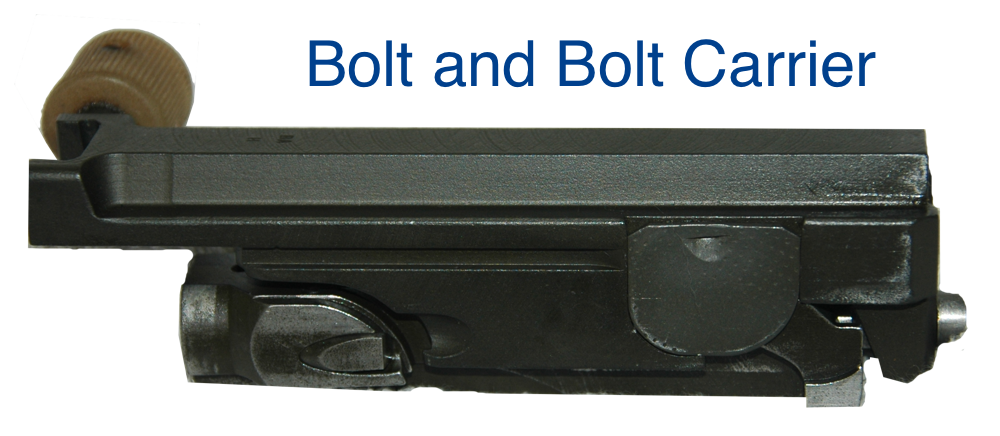
The MAS Mle 1940 would have been a classic rifle to rival the Garand if it had been adopted in any quantity. The weapon was extremely reliable, experiences fewer than 5 stoppages in a thousand rounds (which rivals bolt actions rifles) and could sustain nearly twice the rate of fire of the contemporary MAS Mle1936. It had two significant advantages over the Garand and later German autoloading rifles: it was extremely simple to clean and maintain, and its magazine could be topped off during lulls of close combat. The MAS Mle 1940, because it was designed in tandem with the Mle 1936, shared many parts with that rifle to save money. Stocks and hardware were nearly identical and used the same manufacturing tools. The entire magazine element was the same with interchangeable floorplates, springs, and followers. The Mle 1940 used the same bayonet as the Mle 1936 and even the stacking hooks were identical.
The MAS armory was left untouched by retreating Germans in 1944 and was captured by French resistance. Unfortunately the resistance ransacked the plant, causing more damage in a single day then the Germans did in four years. In particular they stole all of the MAS Mle 1940 prototypes. This left the French in a desperate situation. American supply commands had requested that the Free French avoid purchasing weapons on the open market to avoid disrupting supply chains. This was a reasonable request and many small contract orders from manufacturers directly before the war (and before American involvement) had served to cause considerable confusion in the "Cash and Carry" and "Lend Lease" programs. While on paper many French units were built around standard US Army division packs, in reality weapons such as the Garand were in short supply and even the M1 Carbine, used the by French as a frontline weapon, was not received in sufficient numbers. As a result the French forces were left to use US tactics but without the rapid fire reliability of a semi-automatic work. French tactics differed by issuing grenade launchers in much larger numbers than other armies, but these were not available in anything like the numbers needed.
As a result, the French hoped to get production at the MAS armory up to speed, and one aspect of that was to produce an updated MAS 1940 in large quantities. Despite pleas from the Free French government most were never returned. The ransacking of the MAS plant was a setback, but rifle production was quickly on track, with the design for the French semi-automatic being cobbled together from drawings and memory. Thenew rifle was essentially the Mle 1940 design updated to use a 10 round magazine. Plans were made to start production at nearly 20,000 weapons per month, with the first orders going the the French Navy (who would need them in Pacific and Asian operations). The new weapon was designated the Mle 1944, with serial production starting in early 1945.

In the winter 1945 the French military had a military establishment that was rapidly trying to rebuild and re-equip itself. Its military structure contained 13 Foreign Legion and Free French divisions rapidly re-equipping with and initial American donation of 50,000 Garand rifles and 75,000 M1 Carbines, 6 Colonial divisions equipped with approximately 60,000 Berthier and M1936 rifles and carbines, tens of thousands of Enfield and M1903 rifles in .30 M2, and huge assortment of smaller units forming or reforming from resistance groups and soldiers released from captivity. There was even a considerable use of captured war stock with German K98 rifles in 8mm Mauser serving alongside French rifles in 7.5 and 8mm Lebel and American rifles in .30 M2 and .30 Carbine. This huge number of rifles on-hand stopped the initial plans to issue the MAS Mle 1944 en masse to the military. Instead production of the cheaper Mle 1936 went ahead since this rifle was already in service in quantity. MAS Mle 1944 production was ended a few months after the war stopped. Despite this the weapon's design turned out to be a complete success among units equipped with it. The limited production run of rifles would serve in combat with the Marine Commandoes in Indochina starting in 1946 where it gained a reputation for reliability. It was also carried on French warships through the 1980s in the version of the updated MAS Mle 44A.

French command decided to start manufacture of the MAS rifle series again in 1948 making some simple changes to the design. At the time the French and the new North Atlantic Treaty Organization was trying to seek a unified rifle for adoption. Because of the huge number of them produced, the M1 Garand was the defacto standard rifle of NATO, but although reliable it was heavy and not well suited to use in armored personnel carriers. Otherwise there was no real consensus on weapon design. The British were not unreasonably holding onto their Enfield bolt action rifles while they pushed for a true assault rifle. The Americans were against any form of assault rifle, preferring a large battle rifle with long range accuracy emphasized over other battle characteristics. The Belgium military was working on two battle rifle designs, the Fabrique National FN 49 (which had been nearly ready when WW2 intervened) and a second more modern design that would become the FAL.
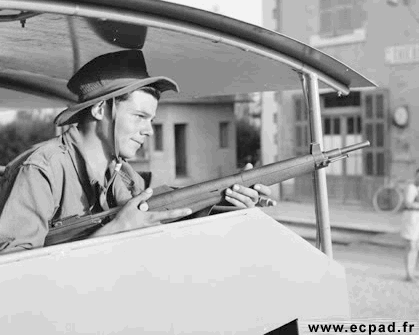 The French, anxious to start retiring their remaining Berthier carbines, decided to move on without the rest of NATO soon after the organization was formed. The result was a flurry of weapon designs including a new pistol, submachine gun, general purpose machine gun, and the MAS Mle. 1949. The 1949 though came at the wrong time (which could be called the story of French small arms development) for mass production, but its design represented a battle rifle with a wide range of advanced features.
The French, anxious to start retiring their remaining Berthier carbines, decided to move on without the rest of NATO soon after the organization was formed. The result was a flurry of weapon designs including a new pistol, submachine gun, general purpose machine gun, and the MAS Mle. 1949. The 1949 though came at the wrong time (which could be called the story of French small arms development) for mass production, but its design represented a battle rifle with a wide range of advanced features.
French attempts to secure Indochina was draining money from equipment purchases by the time manufacture started, and since the Mle 1949 was nearly twice as expensive as the MAS Mle 1936, which was providing satisfactory service once it was equipped with an integral grenade launcher, it was not adopted as a universal arm. Further the MAS Mle 1949 was facing political headwinds from American and British allies. The Americans wanted all of NATO to adopt a universal rifle (and preferred their own T36 design firing the T65 round) and had already convinced the British to bury their own innovative rifle design. Finally the mle. 1949 was killed not by the turmoil in NATO but by American largesse - 200,000 M1 Garands and 210,000 Carbines were transferred through the Military Assistance Program to the French military from 1951 to 1960, added to the tens of thousands of weapons already in French hands, allowed the French to delay adoption of their own rifle design. The imperfect but free Garand was better than a perfected but costly MAS Mle 1949, at least while colonial wars drained the French pocket book.
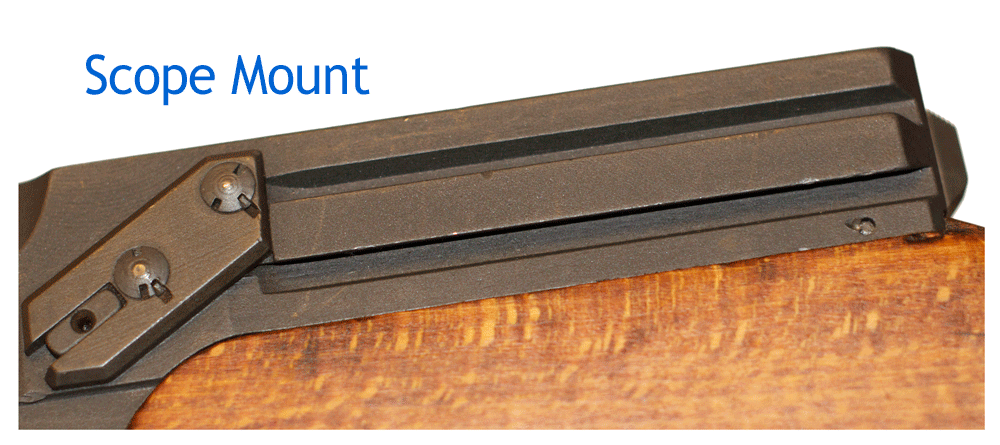
The MAS mle. 1949 had two design characteristics that would set it apart from other battle rifles. The weapon's receiver was milled to accept a scope mount and scopes were provided in some quantity to units issued with this rifle, and the weapon had the grenade launcher sights from the MAS Mle 1936 LG48 including on the weapon, making each rifle an accurate grenade launching platform (essential to French small unit tactics). The Mle 1949 also dropped the spike bayonet.
The MAS Mle 1949 was adopted by Syria, with as many as 6,000 weapons going there in the early 1950s based on observed serial numbers. These weapons have both the spike bayonet of the Mle 1944 as well as the grenade launcher of the Mle 1949.
In the 1960s many surviving MAS Mle 1949s had their grenade launcher removed. The LG 48 type grenade launcher had long been superseded in French service by a 22mm NATO standard device (found in different forms on the MAS Mle 1936/51 and the Mle 1949/56) and French units that still had the older launchers in service were advised not to use them. Many of the units with the launchers removed were intended for use by unit marksmen, and thus had less need of the launcher. The launcher can be found both present, removed by armorers in the 1960s, and removed to facilitate importation into California in the United States.
The MAS Fusil Mle. 1949/56 had its start in the nearly sixty-year French desire to equip their forces with a universal autoloading rifle. The élan vital movement, two world wars, a depression, the massive French nuclear program, and expensive operations in the French colonies during the 1920s and 1950s all conspired to prevent the adoption of a universal rifle, but French engineers had the advantage of a program of development that continued despite invasion, war, and political intrigue.
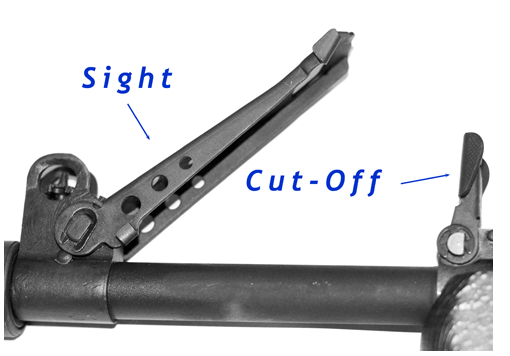 The basis for the Mle 1949/56 is the Mle 1949, with the 49/56 incorporating the entire wish list of modifications asked for by soldiers in the field. French combat experience since the Great War had attempted to answer the question of how soldiers could suppress and eliminate fixed machine guns and mobile armored vehicles. The French answer was the development of a rifle section trained to use firepower generated by rifle grenades, scoped rifles, and automatic weapons, combined with tactical training in small unit coordination. The 1916 modification of the Berthier, especially the carbine versions, became especially popular with soldiers because it was short, easy to maintain, and had reasonable firepower.
The basis for the Mle 1949/56 is the Mle 1949, with the 49/56 incorporating the entire wish list of modifications asked for by soldiers in the field. French combat experience since the Great War had attempted to answer the question of how soldiers could suppress and eliminate fixed machine guns and mobile armored vehicles. The French answer was the development of a rifle section trained to use firepower generated by rifle grenades, scoped rifles, and automatic weapons, combined with tactical training in small unit coordination. The 1916 modification of the Berthier, especially the carbine versions, became especially popular with soldiers because it was short, easy to maintain, and had reasonable firepower.
The French search for a new rifle outlined several requirements:
1) The rifle must be more reliable than a bolt action weapon (which typically has a failure rate of .5% mostly due to operator error). The French Mle 1949 met this requirement - was more reliable than the Garand (a yard stick for reliable weapons) and considerably more reliable than the M1 Carbine, a favorite of French soldiers.

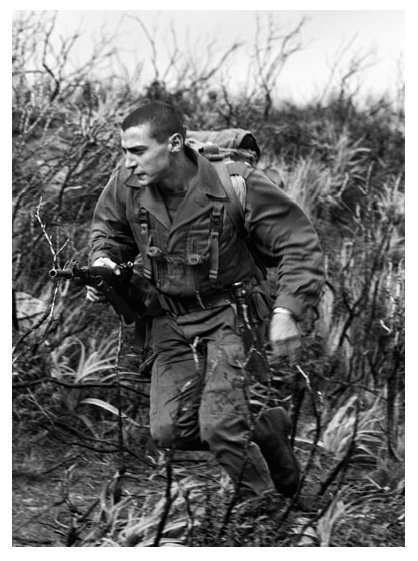 2) The weapon should be as easy to maintain as the most reliable bolt-action weapon in French service (the MAS Mle 1936). The MAS Mle 1949 had fewer parts to deal with than the Garand, coming apart into the bolt cover, receiver, firing pin, mainspring, bolt carrier, and bolt, with no small screws or pins to get lost in the field - a common complaint about earlier French Berthier and Lebel rifles. It was also very rugged. Gas from the action was directed into the bolt carrier, not the bolt face, and the weapon was machined of high grade steel.
2) The weapon should be as easy to maintain as the most reliable bolt-action weapon in French service (the MAS Mle 1936). The MAS Mle 1949 had fewer parts to deal with than the Garand, coming apart into the bolt cover, receiver, firing pin, mainspring, bolt carrier, and bolt, with no small screws or pins to get lost in the field - a common complaint about earlier French Berthier and Lebel rifles. It was also very rugged. Gas from the action was directed into the bolt carrier, not the bolt face, and the weapon was machined of high grade steel.
3) The weapon should be easily deployed from a personnel carrier or helicopter. Weapon length, although important, is less a factor than the general size of the weapon overall. Mechanized soldiers liked the M1 carbine and MAT 49 submachine gun, but did not like these weapon's lack of stopping power. Many soldiers complained about the long magazines of these weapons - although the magazine capacity was a tactical advantage in close combat since they could not be "topped off" the magazines were at times difficult to store and could be clumsy in fights. The FAL and M14 prototypes were too heavy and long as was the older M1 Garand. At the same time the admired AK-47 was not very accurate and heavy to boot, although modifications to that weapon showed promise of reducing its weight. The newly adopted weapon would need to be a compromise in size and power of cartridge fired.
4) The weapon should have an easily mounted telescopic sight and all rifles be sufficiently accurate to serve as a team marksmanship weapon when tuned by a unit gunsmith. Nearly every main battle rifle in service could have a scope equipped, but most were retrofits drilled into the weapon by armorers. The French military wanted every rifle to be able to carry a scope. The only battle rifle ever designed with a built-in scope mount was the MAS Mle 1949.
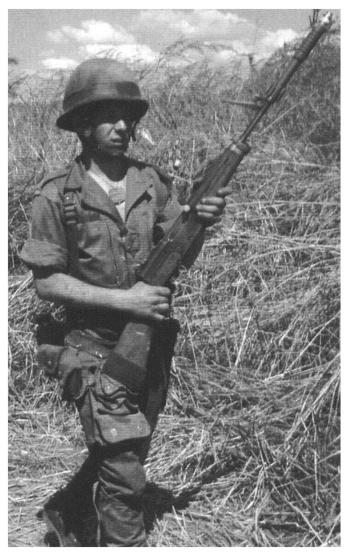 5) Each weapon should be equipped with a grenade launcher with high-quality direct and indirect sights, capable of using a gas cutoff to launch the largest anti-tank grenades. French infantry tactics made extensive use of rifle grenades. The United States were interested in NATO countries such as France adopting the Project Niblick created 40mm Grenade but French testing of this weapon found that it did not carry enough explosive charge for anti-tank use and was underpowered for anti-personnel use. Since the French considered a grenade launcher integral to small-unit tactics, and also important in anti-tank combat, the 40mm was seen as more a harassing weapon than something that could be relied upon as the center of a small combat team.
5) Each weapon should be equipped with a grenade launcher with high-quality direct and indirect sights, capable of using a gas cutoff to launch the largest anti-tank grenades. French infantry tactics made extensive use of rifle grenades. The United States were interested in NATO countries such as France adopting the Project Niblick created 40mm Grenade but French testing of this weapon found that it did not carry enough explosive charge for anti-tank use and was underpowered for anti-personnel use. Since the French considered a grenade launcher integral to small-unit tactics, and also important in anti-tank combat, the 40mm was seen as more a harassing weapon than something that could be relied upon as the center of a small combat team.
The calibre of the new weapon caused some controversy. NATO at the end of the 1950s was striving for a standard rifle ammunition to replace the temporary NATO calibre of 7.62x63mm, and was looking for a standard alliance weapon. The United States, as the lead of the alliance, were pushing the T65 (based on the civilian .300 Savage round), and this was gaining widespread acceptance, but this round was no more effective than the French 7.5x54mm already in service. The MAS Mle 1949 was tested in 7.62x63mm to allow it to use the same ammunition as the M1 Garand, but this required a lengthened receiver and made the rifle heavier than was considered ideal. It also added little to the tactical ability of the rifle.
Another concern of the French was the period of transition. France already had an inventory of weapons that used four different types of rifle ammunition (7.62x63mm, 7.62x33mm, 8x50Rmm, and 7.5x54mm) and two different types of pistol ammunition (9x19mm and 7.65x20mm), which meant adopting the T65 would put 7 types of ammunition into common service. This lead to the decision late in 1958 for the French to eliminate stockpiles of 7.65x20mm and 8x50Rmm all together (weapons in these calibres were passed as a whole to the Gendarme) and to put into place a plan to eliminate the 7.62x63mm and 7.62x33mm from rapid reaction, foreign service, and high readiness divisions in the next five years. The only round that made sense to maintain was the 7.5x54mm of the Mle 1949, especially since there existed more than 100 war days stock of ammunition for these weapons in metropolitan France.
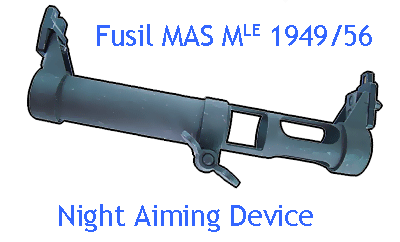 As a result, it was decided that the new rifle would use the French 7.5x54mm round and be based on the reliable MAS autoloading design. The MAS Mle 1949/56 was preceded by two pre-production versions, the MAS Mle 1949/54 and MAS Mle 1949/55. These weapons were tested to assure the rifle was handy in closed spaces and could be used in both close combat as well as the standard >200 meter engagement ranges that French infantry doctrine called for. Small changes were then made, including simplifying the rear sights and changing the grenade launcher. The weapon was also tested with a range of specialized accessories, many of which were adopted as standard issue. These included a radium painted night sight which allowed easy point shooting in low light settings, and a bayonet knife to replace the spike bayonet in use on the MAS Mle 1936.
As a result, it was decided that the new rifle would use the French 7.5x54mm round and be based on the reliable MAS autoloading design. The MAS Mle 1949/56 was preceded by two pre-production versions, the MAS Mle 1949/54 and MAS Mle 1949/55. These weapons were tested to assure the rifle was handy in closed spaces and could be used in both close combat as well as the standard >200 meter engagement ranges that French infantry doctrine called for. Small changes were then made, including simplifying the rear sights and changing the grenade launcher. The weapon was also tested with a range of specialized accessories, many of which were adopted as standard issue. These included a radium painted night sight which allowed easy point shooting in low light settings, and a bayonet knife to replace the spike bayonet in use on the MAS Mle 1936.
Owning the MAS autoloading rifle

Tens of thousands of these weapons were released to the civilian markets, most to the American market through importers such as Century Arms International. All varieties of the MAS rifle were imported except the MAS Mle 1940, which no copies are known to exist in civilian hands, with the MAS Mle 1949/56 being the most commonly imported.
The MAS 1949 series is an incredibly tough weapon and most of those that entered the market were factory refurbished when they were stored for the last time during the conversion to the FAMAS. The author has seen more than forty example that each was in nearly perfect condition. Despite this the use of corrosive ammunition means that the owner of the weapon should always have them looked over by a trained gunsmith. One major limitation of this is the lack of any suitable headspace gages on the open market for the 7.5x54mm round. Gages can be made by custom gage makers. but they are expensive. Collectors of 7.5x54mm chambered weapons should consider having a set made because it is unlikely a gunsmith will have them or be able to afford to purchase them. Spare parts for these weapons still exist, but they are getting rare with little chance of future manufacture. Firing pins are relatively common, as are magazines, but other parts must be hand made.
The main problem with this weapon, shared with all French military weapons prior to the 1970s, is the limited availability of ammunition. The author has had no problem finding military surplus, corrosive, Berdan ammunition at $8.00 per 20 rounds delivered, but stocks of this ammunition is obviously limited. Syrian surplus ammunition is occasionally found on the market, but this ammunition is so unreliable as to be worthless even for reloading and never should be purchased.
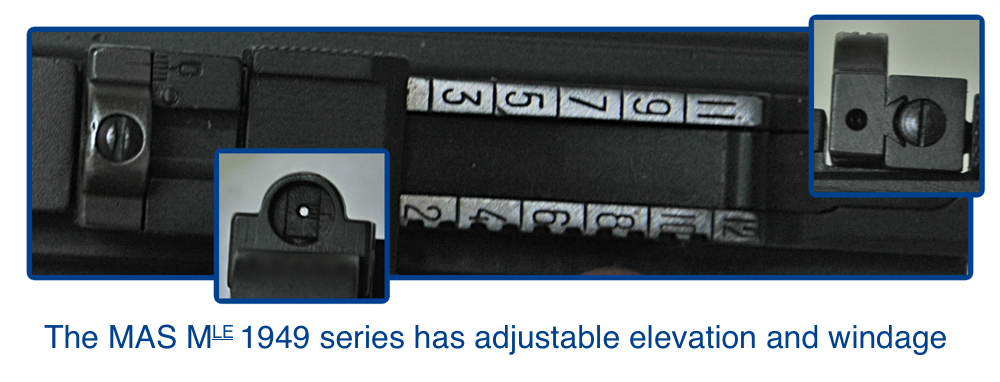
The main source of new ammunition is Serbian ammunition company Prvi Partizan, which has been producing these rounds for nearly fifty years. The main difficulty with acquiring Prvi Partizan ammunition is that your local gun dealer (I always prefer to buy products locally even if it costs a bit more) has to spend a lot of time trying to get the ammunition from the national dealers. The national distributor does not normally answer phone calls or queries in a timely manner, my own dealer spent nearly a year trying to acquire ammunition from Prvi Partizan at any cost and was unsuccessful.
Ammunition can cause two problems. The first is that surplus ammunition is usually corrosive and requires careful cleaning. French soldiers routinely cleaned their weapons with gasoline and oiled it with crank case oil, and the weapon was capable of functioning reliably with only minimal care, but they had the benefit of spare parts and armorers to put the weapon right every few years. Current owners of the weapon should treat it like any other old rifle - clean it immediately after firing, avoid over oiling, and make sure that water is kept out of its moving parts where it can cause corrosion. When using civilian ammunition like Prvi Partizan another problem crops up. The weapon has a free floating firing pin which reduces the number of parts in the bolt, but requires military primers to avoid double firing as the weapon's bolt slams closed. The normal fix is to slightly file down the standard firing pin to make it less likely to punch the civilian primers.
All of the weapons can have small issues that need to be addressed. The hammer of the weapon, like any other hammer fired rifle, can drift out of position and no longer make a good strike at the firing pin. This can be solved by shimming it back into place with small spacers.
When the MAS Mle 1949/56 was imported many were converted to .308 Winchester (the civilian, higher pressure version of the 7.62x51mm). These conversions where not uncommon with the MAS Mle 1936 when it was imported, whose strong bolt mechanism made it ideal for the higher pressure round, but the 1949/56 required a more sophisticated and careful conversion. Without it the MAS Mle 1949/56 in .308 is becomes barely functional as a rifle, tearing cases, double loading, and stove piping.
| Top |
| Citations |
Standard Catalog of Military Firearms: The Collector's Price and Reference Guide
Proud Promise: French Autoloading Rifles, 1898-1979